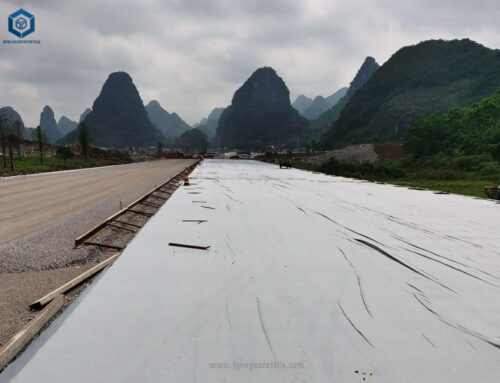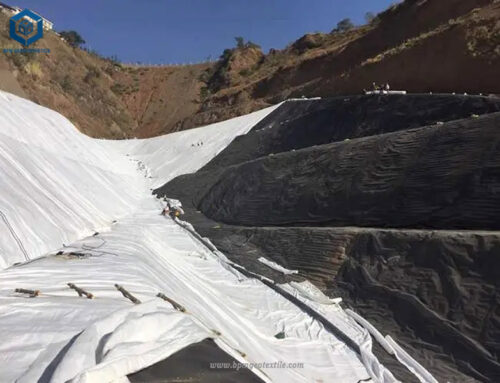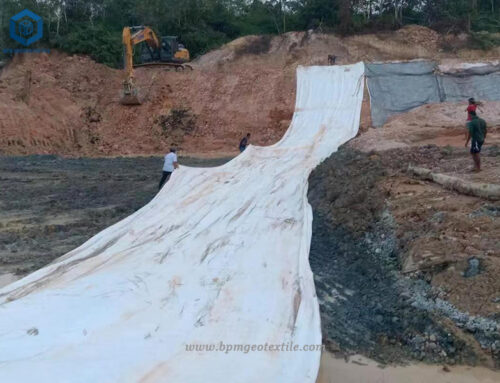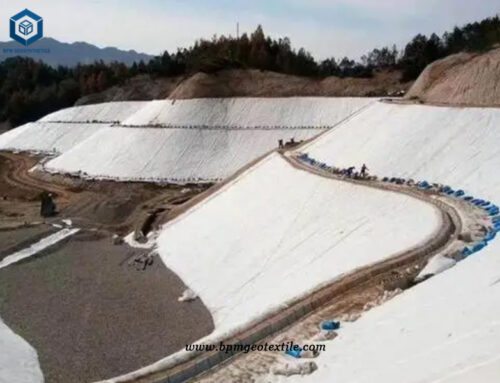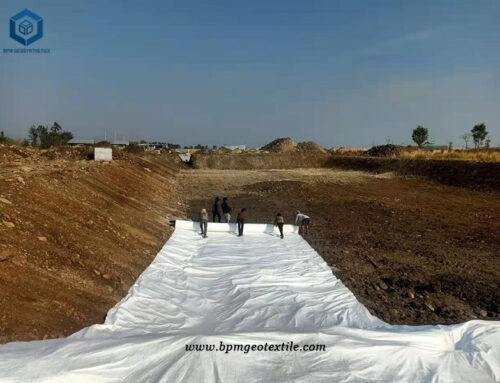The needle punched nonwoven geotextile is entangled to form a complex 3D structure by random fibres, accounting for its bulky nature, wide range of pore size distribution, and good drainage. The fibres may be made in continuous or short lengths and achieve their strength by interlocking. Needle-punched nonwoven geotextiles have excellent water flow rates and are used for filtration of soil fines. Needle punched nonwoven geotextile fabricis characterised by high porosity, elongation andenergy absorption properties which makesthem ideal for a wide range of applicationsincluding subsurface drainage, filtration, separation, and protection of liners.
Case Study
- Location: Vietnam
- Products: Needle Punched Geotextile
- Application: Roadbed reinforcement
Needle punched geotextile has the functions of strengthening and isolating and protecting the foundation. The permeability coefficient of geotextiles and other geotextiles is equivalent to that of coarse and medium sand. If they are not blocked, they can maintain good capillary function in each section; on the other hand, the hydrophilicity ratio of geosynthetics soil has poor hydrophilicity, so it can reduce the height of capillary rise. Therefore, it is an indisputable fact that geotextiles can play an important role in strengthening the foundation. The application of geotextile can greatly enhance the stability of the roadbed and the safety and stability of the road. According to the geotextile manufacturer’s construction experience in strengthening the roadbed, in addition to meeting the requirements of infiltration, a layer of thin sand, generally 8-9cm thick, can be laid on the geotextile to obtain a mores satisfactory effect. If used in road foundation reinforcement projects in cold areas, a new type of permeable layer can be formed, which serves to cut off the capillary so that the moisture in the lower soil cannot be supplied to the unsaturated soil layer above it.
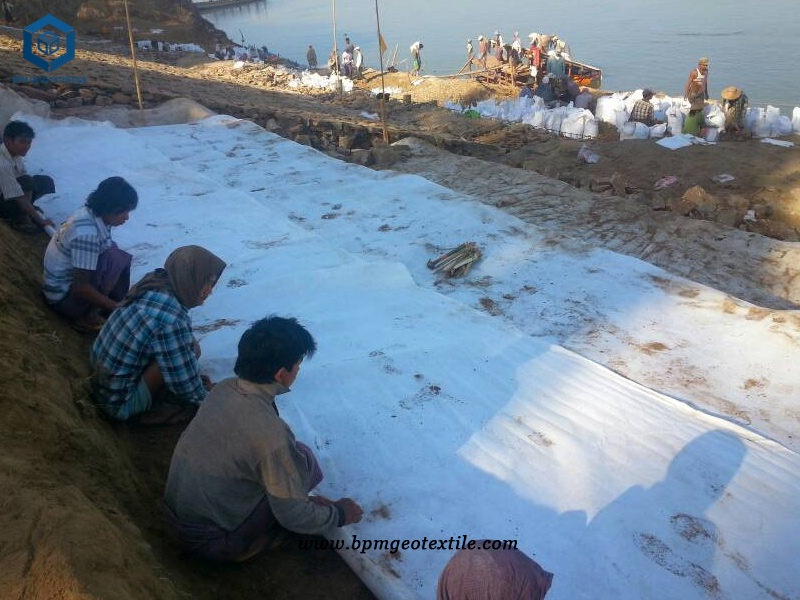
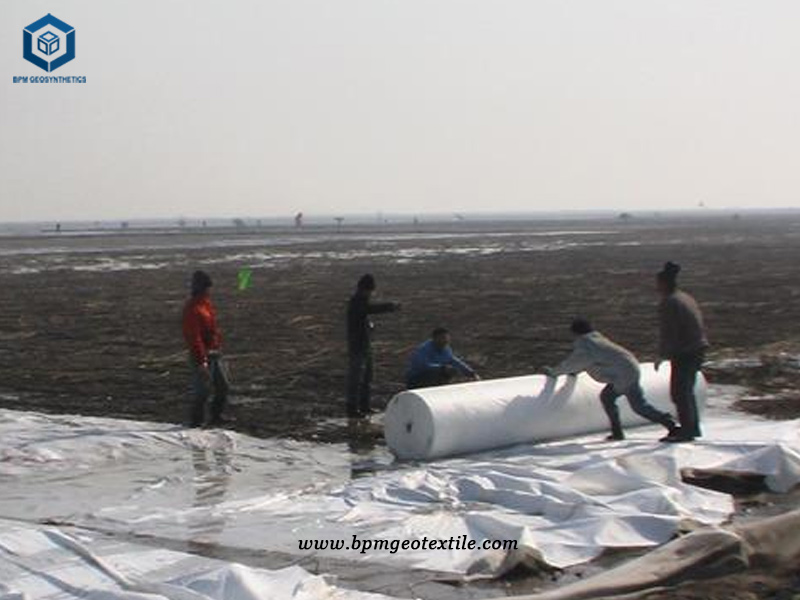
Issue
Vietnam has a tropical monsoon climate with an average annual humidity of 84%. The north Vietnam is divided into four seasons: spring, summer, autumn and winter. But in the south Vietnam, there are two distinct seasons of rain and drought. In most areas, the rainy season is from May to October, and the dry season is from November to April of the following year. At the beginning of the rainy season each year, in order to prevent floods from rising dams and rivers, the government purchases a lot of needle punched geotextile to reinforce the roadbed.
Solution
Needle punched nonwoven geotextile is used in the paving construction of roadbed reinforcement works.
(1) Laying the needle punched nonwoven geotextile according to the width and full section of the embankment bottom.
(2) Leave enough anchorage length on each side of the embankment.
(3) In order to ensure the integrity, when the continuous overlap method is adopted, the overlap length should be 0.3 ~ 0.5m. In the seaming method, the bonding width shall not be less than 50mm.
(4) During on-site construction, the damaged needle punched non woven geotextile must be repaired immediately. The seams of the upper and lower layers should be staggered alternately, and the staggered length should not be less than 0.5m.
(5) Try to avoid prolonged exposure and sun exposure.
Benefits
The advantages of needle punched nonwoven geotextile used in roadbed reinforcement projects:
- Light weight, good overall continuity, high tensile strength, corrosion resistance, anti-microbial erosion, and convenient construction.
- The pore diameter is small, the permeability is good, the texture is soft, and the soil is well combined.
What are the functions of geotextile?
- Isolation. Use polyester staple fiber needle-punched geotextiles to isolate building materials with different physical properties (particle size, distribution, consistency and density, etc.) (such as soil and sand, soil and concrete, etc.). Two or more materials are not lost or mixed, the overall structure and function of the materials are maintained, and the load-bearing capacity of the structure is strengthened.
- Filtration (reverse filtration) function. When water flows from the fine material soil layer into the coarse material soil layer, the good air permeability and water permeability of the polyester staple fiber needle-punched geotextile are used to allow the water to pass through and effectively carry the soil particles. Fine sand, small stones, etc., to maintain the stability of water and soil engineering.
- Drainage function. For example, because the polyester staple fiber needle-punched geotextile has good water conductivity, it can form a drainage channel inside the soil, thereby draining the excess liquid and gas from the soil structure.
- Reinforcement. For example, polyester staple fiber needle-punched geotextiles can be used to enhance the tensile strength and deformation resistance of the soil, thereby enhancing the stability of the building structure, so that the quality of the soil can be improved.
- Protective effect. When the water flows on the soil, the use of geotextile can effectively spread, transfer or decompose the concentrated stress, so as to prevent the soil from being damaged by external forces and play a role in protecting the soil.
- Anti-puncture function. Needle punched nonwoven geotextile can be combined with geomembrane to become a composite waterproof and anti-seepage material, thus playing a role of anti-puncture.
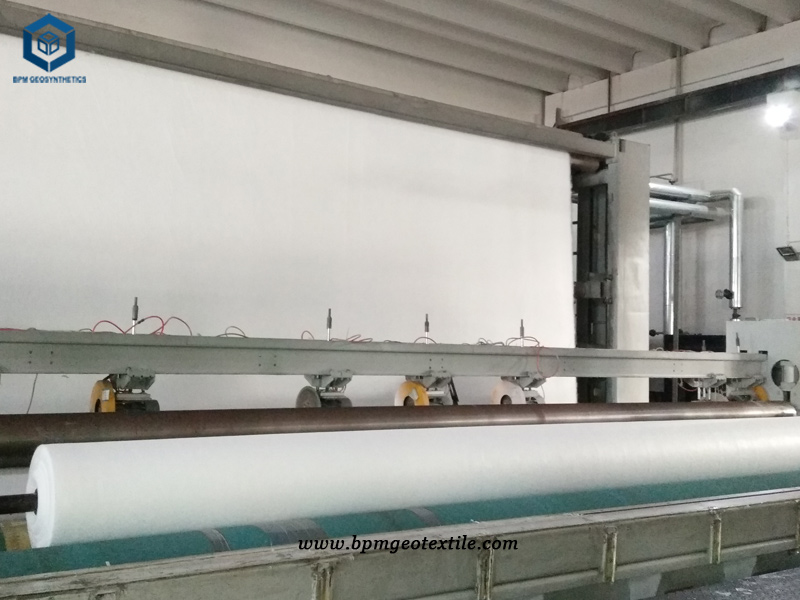
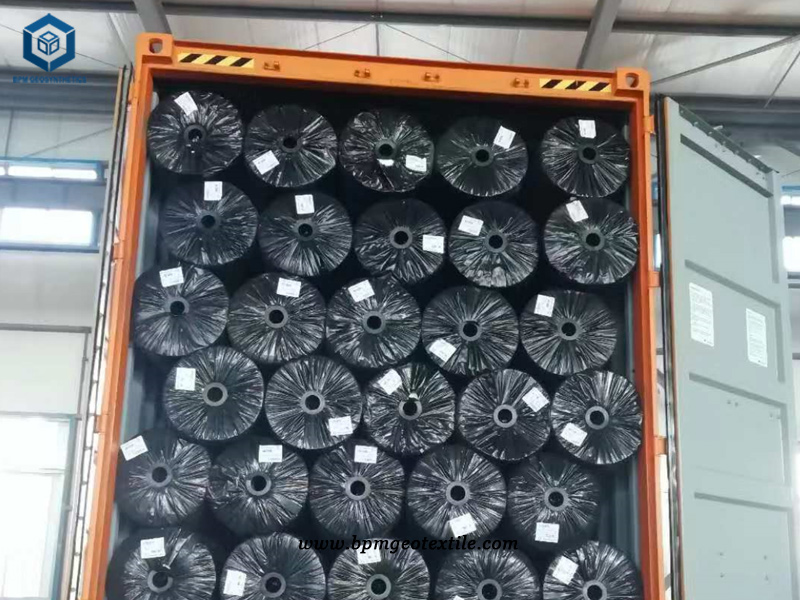
What are the geotextile testing items?
- Geotextile internal quality inspection items: thickness, vertical and horizontal fracture strength, corresponding elongation of nominal fracture strength, burst strength, mass deviation rate per unit area, width deviation rate, thickness deviation rate, equivalent aperture, vertical penetration Coefficient, vertical and horizontal tearing strength, acid and alkali resistance, oxidation resistance, UV resistance, sewing strength, warp and weft tearing strength,
- The internal quality of geotextile selects test items: dynamic perforation, puncture strength, vertical and horizontal strength ratio, in-plane water flow, wet sieve aperture, friction coefficient, anti-wear performance, creep performance, splicing strength, constant load elongation , Constant elongation load, etc.
- Geotextile appearance inspection items: uneven cloth surface, creases, debris, poor edges, breakage, thin roads, yarn breakage, yarn shortage and other defects.
Geotextile testing has important reference value for the quality control of railways, highway construction projects, dam protection projects, construction projects, tunnel projects, coastal reclamation, and environmental protection projects. In addition, geotextile manufacturers can also continuously strengthen the improvement of geotextile production process, the research and development of new technologies, and the control of key data through the inspection of geotextiles, and strive to complete the production tasks of geotextiles efficiently and with high quality.
Three ways to identify the quality of geotextile. Geotextiles are widely used in various geotechnical projects with the advantages of filtration, drainage, protection, and enhancement of project quality. However, in the mixed market, buying geotextiles is still a difficult problem for many people. Today, I will provide you with three ways to identify the quality of geotextiles for your reference when purchasing.
- Look at the color of the geotextile. The colors of geotextiles that meet the production standards are pure white, black, light gray, light blue, pattern and so on. Some poor geotextiles are mixed with other materials in the production, the color does not look particularly pure, and some will have some stains. In addition, improper rinsing will also affect the overall color of the geotextile. Geotextiles of the same color have better needle-punched density and better quality.
- Look at the weight of the geotextile. If the quality of the entire roll of geotextile is too light, it means that the texture of the material is impure, and there may be a phenomenon of cutting corners. Of course, in a humid environment, geotextiles will become damp and become heavier, making it easy for businesses to get confused, so everyone must keep their eyes open when buying.
- Look at the thickness of the geotextile. Geotextiles are made of synthetic fibers through needle punching or weaving, and the thickness is usually more uniform when processed. When choosing geotextiles, you must pay attention to the uniformity of thickness in the vertical and horizontal directions.
About BPM
BPM manufactures and wholesales many types of effective and states of the art geotextile, geomembrane, and other geosynthetics to over 36 countries. BPM geosynthetic products are widely used across a variety of industries including waste containment, water containment, aquaculture, industrial project, energy project and mining projects, etc. BPM main customers are from Australia, France, Sweden, UK, Hungary, New Zealand, Poland, Mexico, Ecuador, Brazil, Pakistan, Bangladesh, Thailand, Vietnam, Malaysia, Indonesia, Singapore, Philippines, Sri Lanka, India, UAE, Saudi Arabia, Qatar, Kenya, etc.
BPM is not only manufacturing best quality geosynthetic products but also providing professional design and installation service. OEM, ODM, custom development and fabrication are also available. If you have any questions or inquiries, please fill and submit the following form, we will reply as soon as possible.

